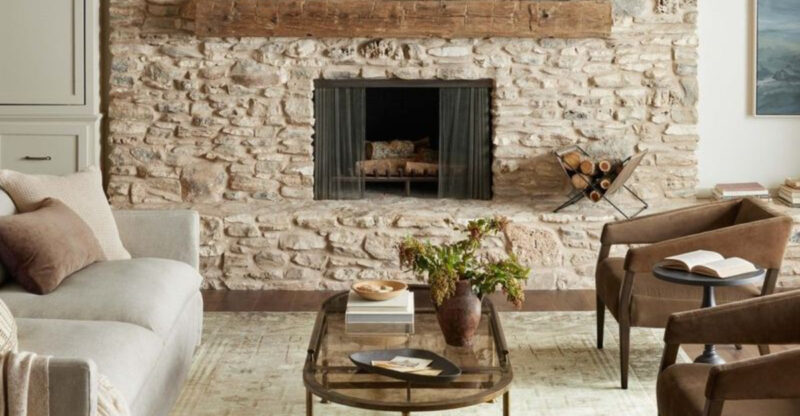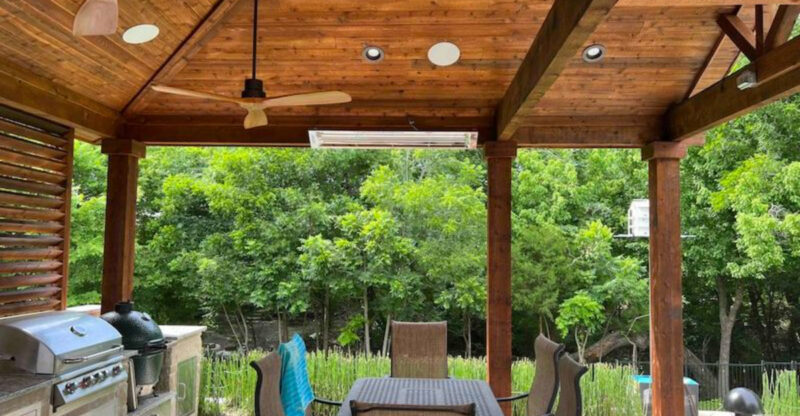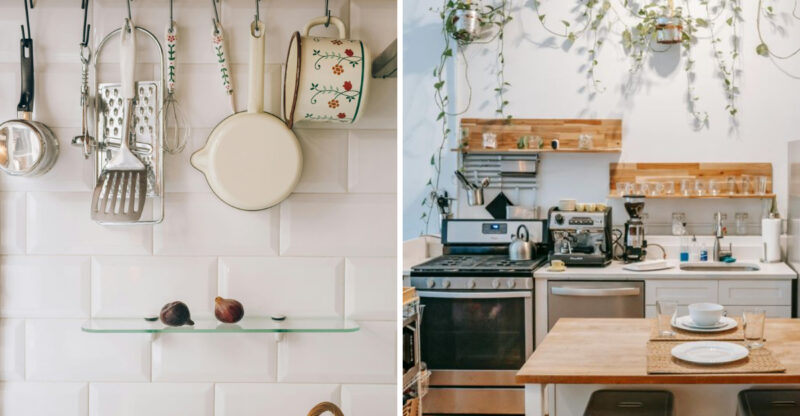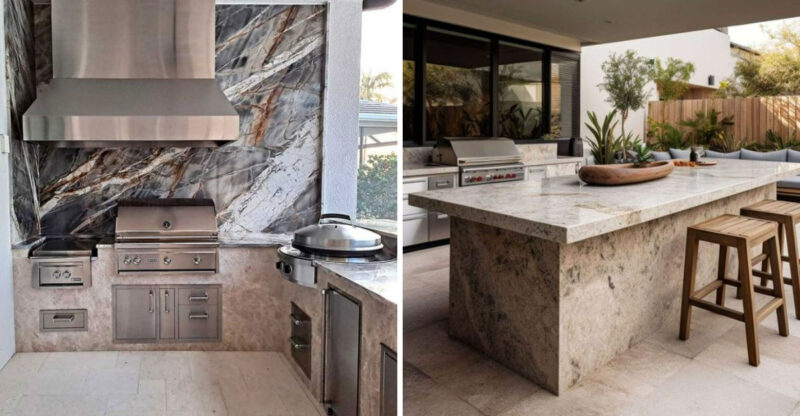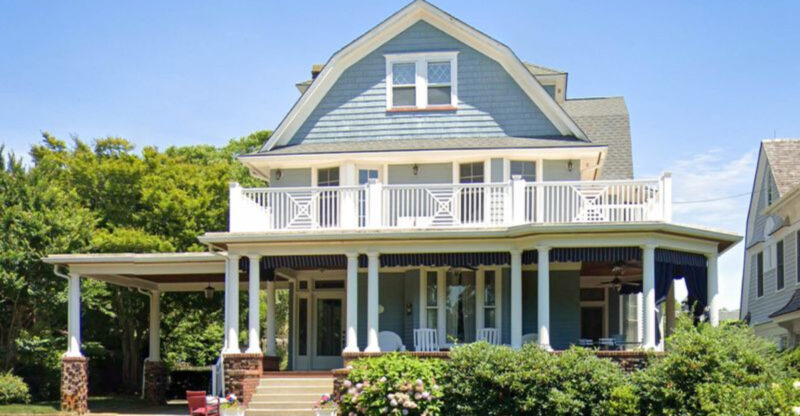22 Design Moves New Yorkers Use To Modernize Wood Cabinets Before Painting

New York apartments often feature outdated wood cabinets that desperately need refreshing.
Before reaching for the paintbrush, savvy New Yorkers know that modernizing the structure and design elements first creates a much more impressive final result.
These pre-painting modifications transform basic cabinetry into custom-looking kitchen features that would make any designer proud.
1. Sanding for Smooth Finish
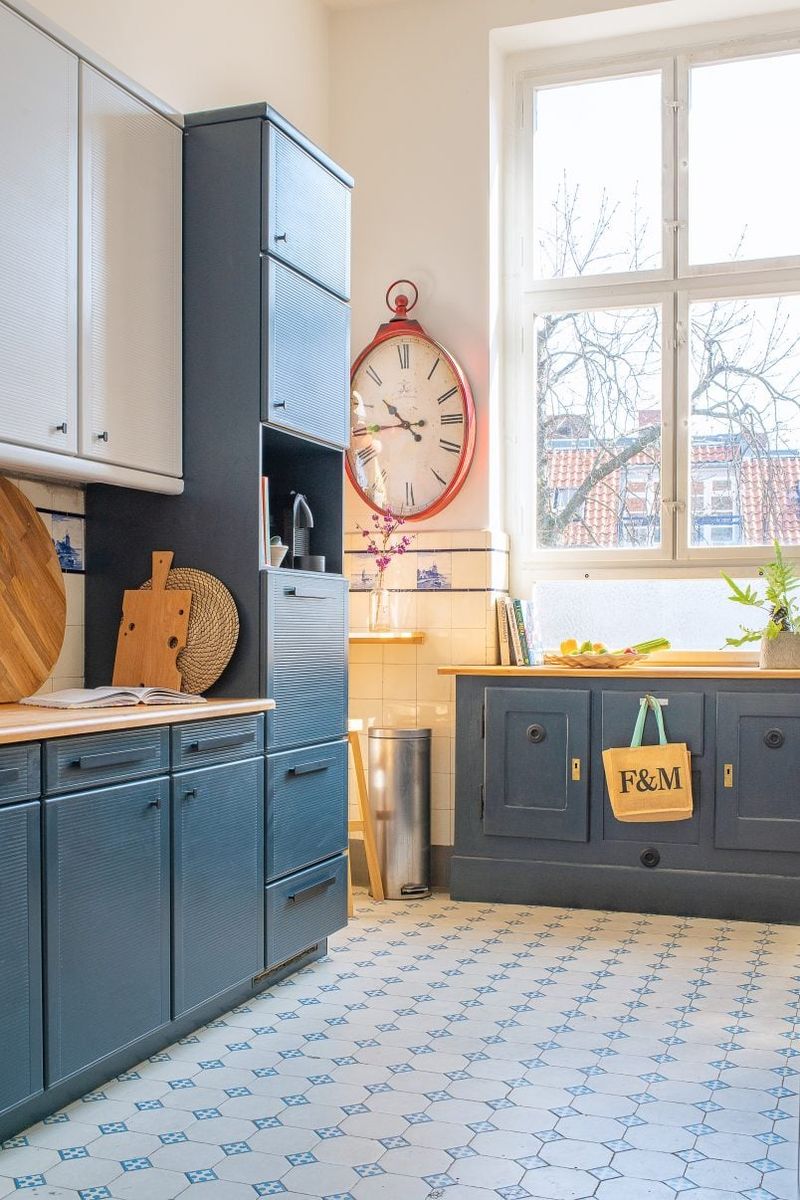
Rough, worn wood surfaces can ruin even the most expensive paint job. Manhattan designers always start by thoroughly sanding cabinet faces with progressively finer grits, typically working from 100 to 220.
This essential prep work removes decades of kitchen grease and creates the perfect base for primer adhesion. Many New Yorkers swear by hand sanding edges and details, then using an orbital sander for flat surfaces.
The key is removing enough material to eliminate scratches and imperfections without compromising the cabinet’s structural integrity. A quick wipe with tack cloth between sandings ensures no dust particles get trapped in your beautiful new finish.
2. Filling Old Hardware Holes
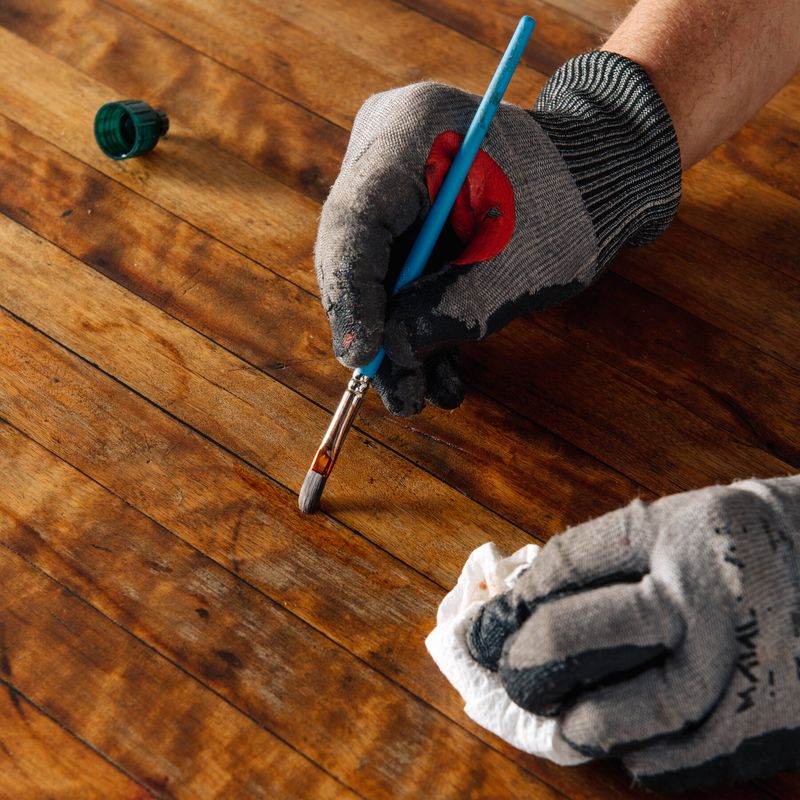
Hardware trends change dramatically over decades, leaving outdated hole patterns that clash with modern aesthetics. Smart renovators use wood filler specifically formulated for furniture to completely conceal these telltale signs of dated cabinetry.
The trick is applying slightly more filler than needed, allowing it to dry completely, then sanding perfectly flush with the surrounding wood. Some Brooklyn woodworkers recommend tinting the filler to match your cabinet’s original color for better blending.
For deeper holes, building up layers gradually prevents shrinkage and cracking. This technique allows complete freedom when selecting contemporary hardware with different mounting specifications than the originals.
3. Swapping Out Hardware
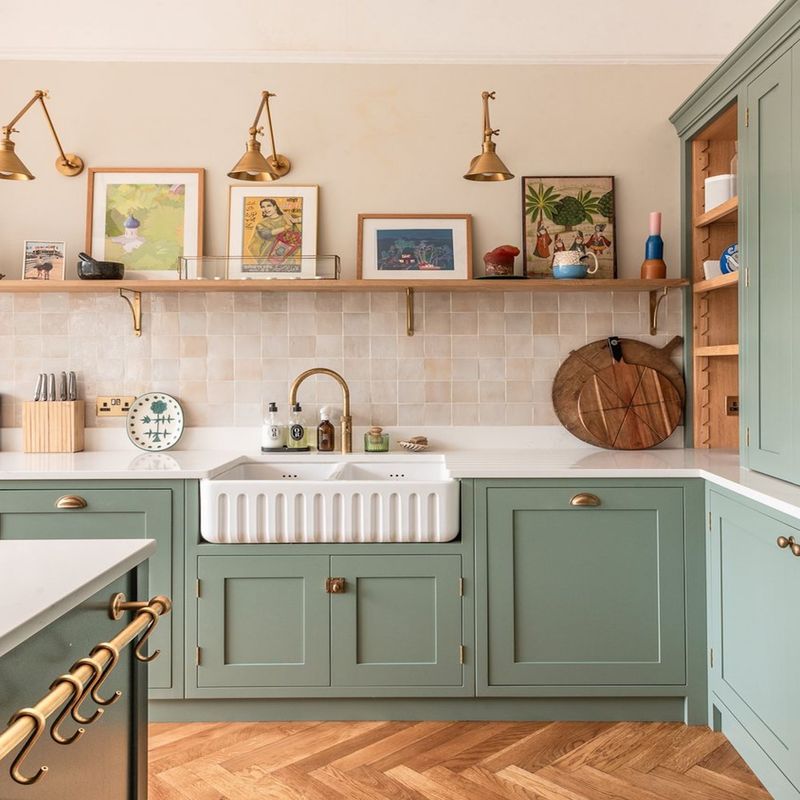
Brass handles from the 80s instantly date otherwise beautiful cabinetry. Upgrading to sleek matte black pulls or minimalist brushed nickel hardware creates an immediate visual transformation that signals modern sensibility.
Measure the center-to-center distance on existing hardware before shopping this dimension (often 3 or 5 inches) determines what replacements will fit without drilling new holes. Williamsburg residents particularly favor elongated bar pulls that span almost the entire drawer width for dramatic linear impact.
If existing holes don’t align with new hardware, consider backplates that cover old holes or the wood filling technique mentioned earlier. This simple swap delivers maximum style impact with minimal effort and expense.
4. Adding Crown Molding
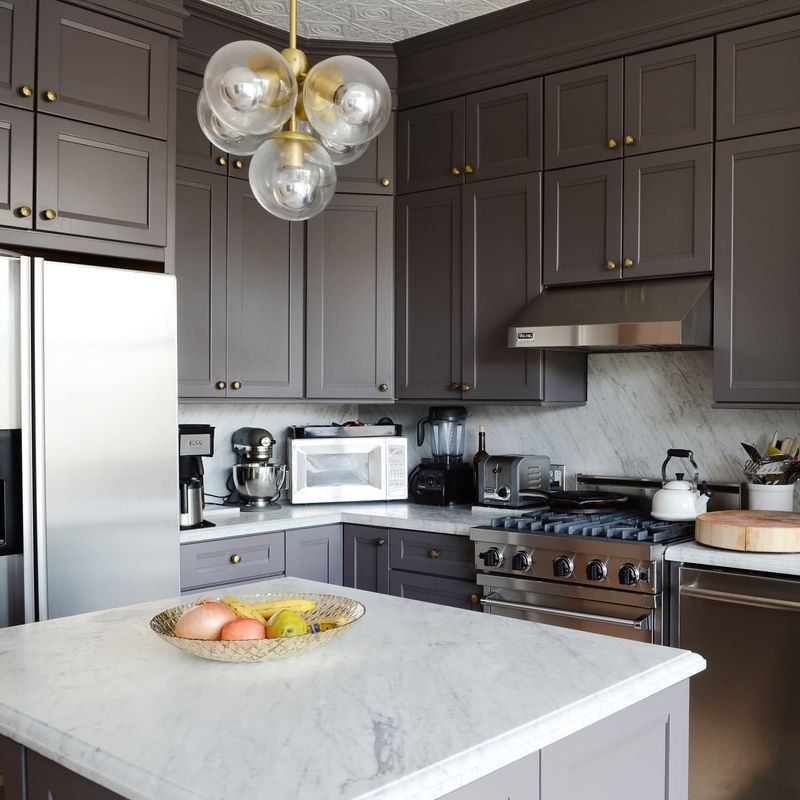
Crown molding transforms ordinary upper cabinets into architectural features that appear built-in and custom-designed. Upper East Side renovators often choose simple crown profiles that extend cabinets to the ceiling, eliminating that awkward dust-collecting gap.
The installation requires precise miter cuts at corners, which many New Yorkers accomplish using a rented miter saw placed carefully on their balcony or in building common areas. Pre-painted molding simplifies the process, though painting after installation creates the most seamless look.
This addition visually heightens ceilings while creating a polished, expensive appearance. Even budget-friendly MDF crown molding creates dramatic impact when properly installed and painted alongside your refreshed cabinets.
5. Installing New Drawer Slides
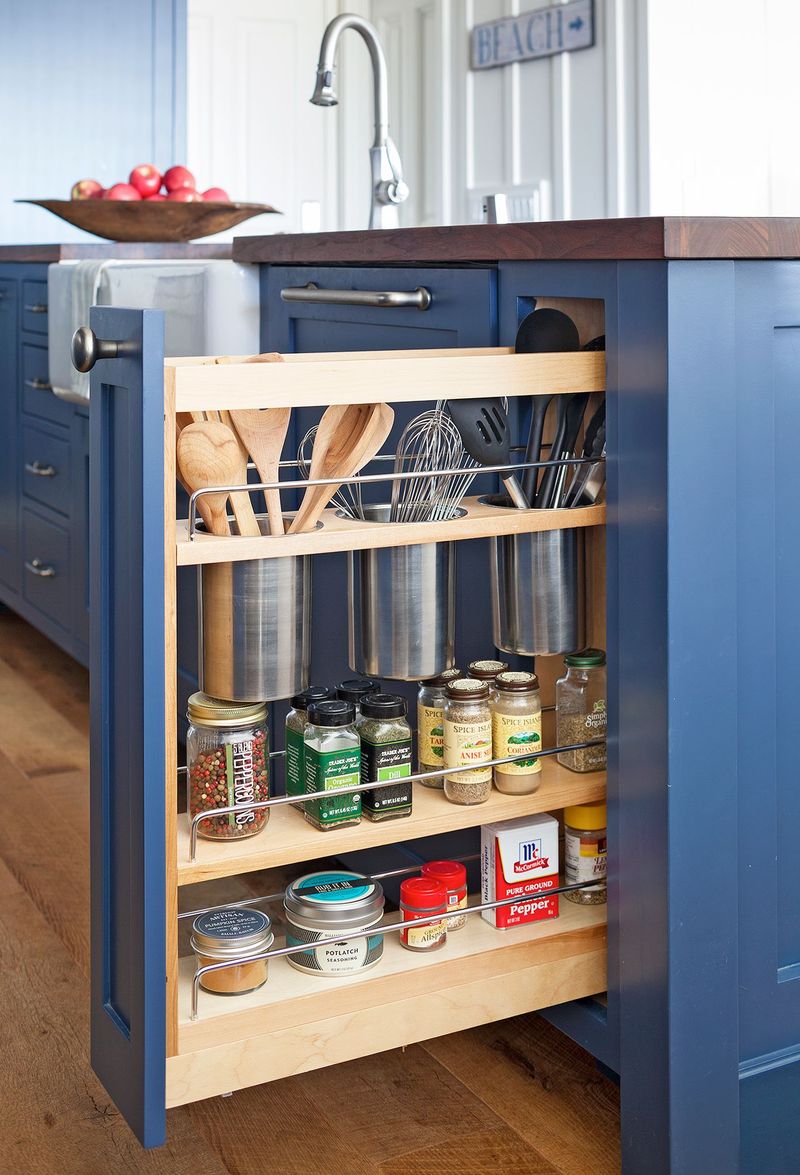
Nothing says outdated quite like sticky, jerky drawer operation. Savvy New Yorkers replace old wooden drawer tracks with modern ball-bearing slides that transform the user experience from frustrating to luxurious.
Full-extension slides allow complete access to drawer contents particularly valuable in space-constrained city kitchens where every inch matters. The installation requires careful measurement and sometimes minor modifications to drawer boxes, but results justify the effort.
Many Chelsea kitchen renovators take this opportunity to reinforce drawer bottoms with additional support, preventing the sagging that occurs over decades of use. This functional upgrade might be invisible to guests, but you’ll appreciate the smooth, silent operation every single day.
6. Replacing Cabinet Feet
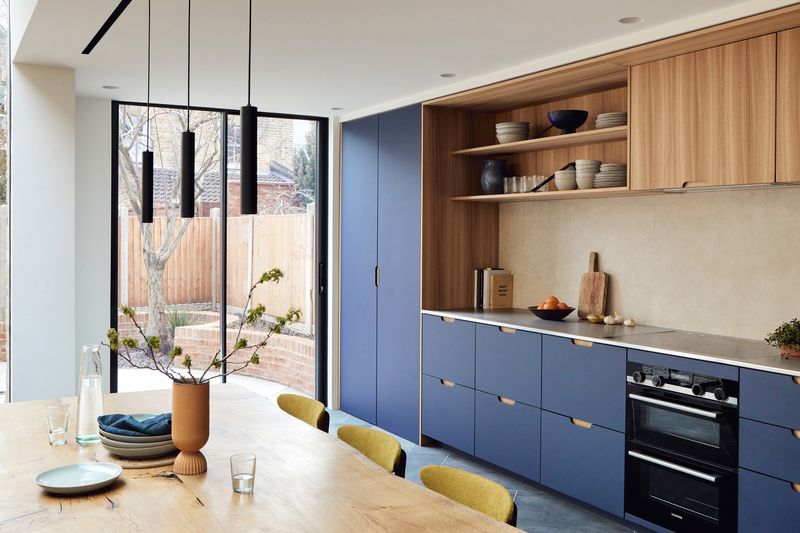
Those curved, chunky feet on lower cabinets scream 1990s builder-grade kitchen. Forward-thinking New Yorkers replace them with sleek metal legs or create a floating appearance with recessed toe kicks.
IKEA-style straight metal legs instantly modernize lower cabinets while making floor cleaning significantly easier—a practical consideration in city apartments where every maintenance task should be simplified. Some SoHo designers remove feet entirely, creating a continuous toe kick that runs the length of the cabinetry.
For truly contemporary style, consider adding LED strip lighting beneath this recessed area, creating a floating effect that makes small kitchens appear larger and more luxurious. This modification requires some carpentry skills but delivers dramatic results.
7. Updating Hinges
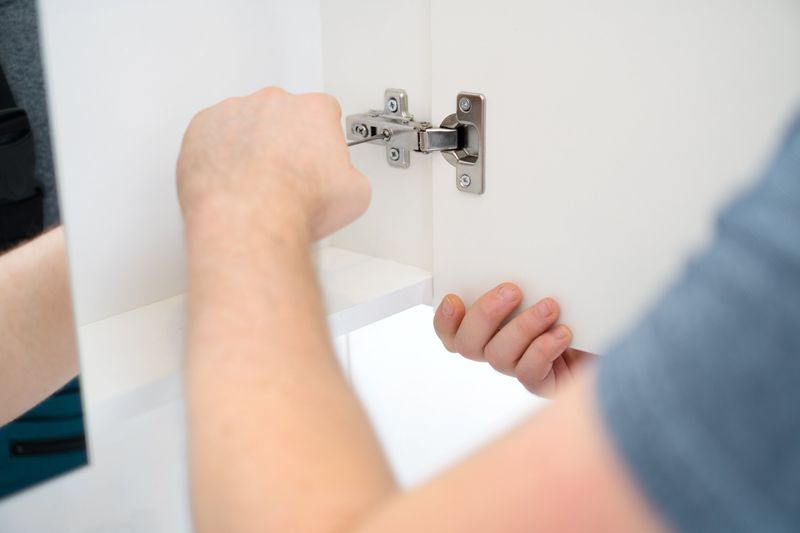
Exposed hinges instantly reveal a cabinet’s age, regardless of how fresh the paint looks. Replacing these with European-style concealed hinges creates a seamless, contemporary appearance that Manhattan designers consider non-negotiable.
This modification requires precise drilling with specialized bits to create perfectly sized cup holes. Many New Yorkers hire professionals specifically for this task, though determined DIYers can rent the necessary tools from specialty woodworking shops.
Soft-close functionality comes standard with most modern hinges, eliminating the annoying slam of cabinet doors—a thoughtful consideration in thin-walled apartments where noise travels easily. Though more expensive than simple hinge replacement, this upgrade dramatically elevates both aesthetics and functionality.
8. Removing Decorative Trim
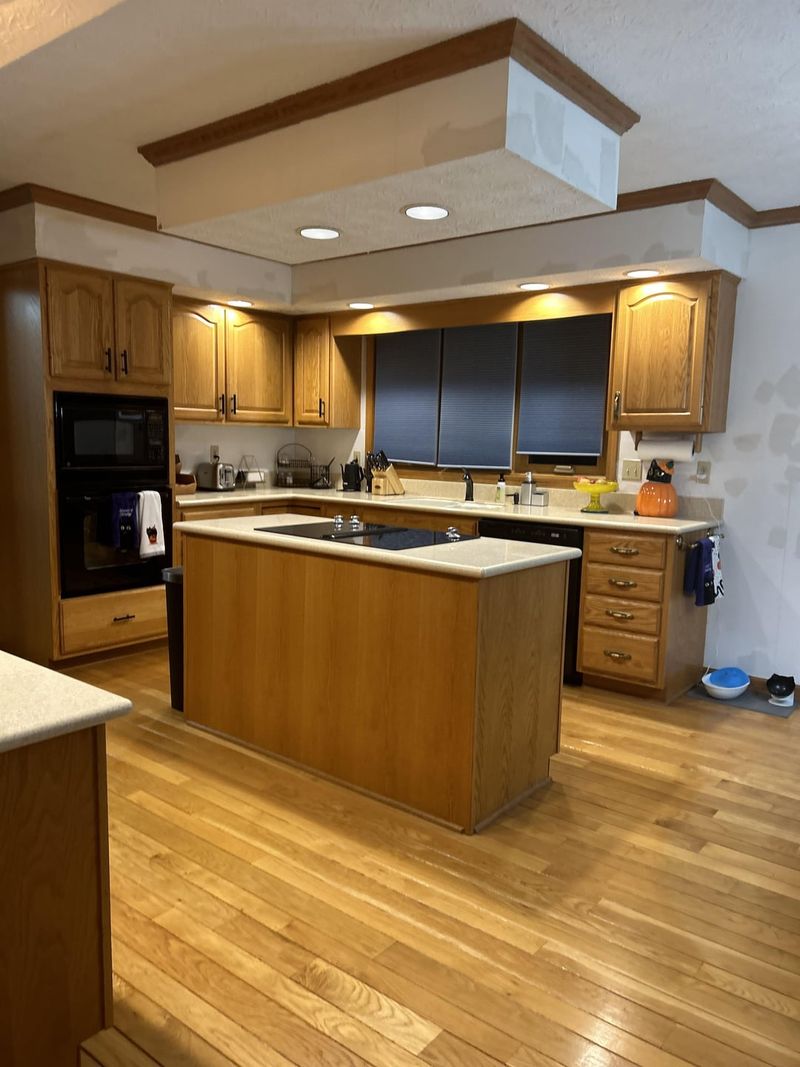
Ornate routing, scalloped edges, and applied decorative moldings instantly date cabinets to specific decades. Astoria renovators often strip away these fussy details, creating clean, simple lines that serve as a blank canvas for modern paint treatments.
Careful use of wood filler and thorough sanding can completely eliminate raised design elements that clash with contemporary aesthetics. For deeper decorative routing, some homeowners apply thin wood veneer over the entire surface, creating a perfectly flat panel.
This simplification process works particularly well when transitioning from traditional to modern design schemes. While labor-intensive, the transformation can be dramatic—turning grandmother’s kitchen into something that would look at home in an architectural magazine.
9. Adding Shaker-Style Panels
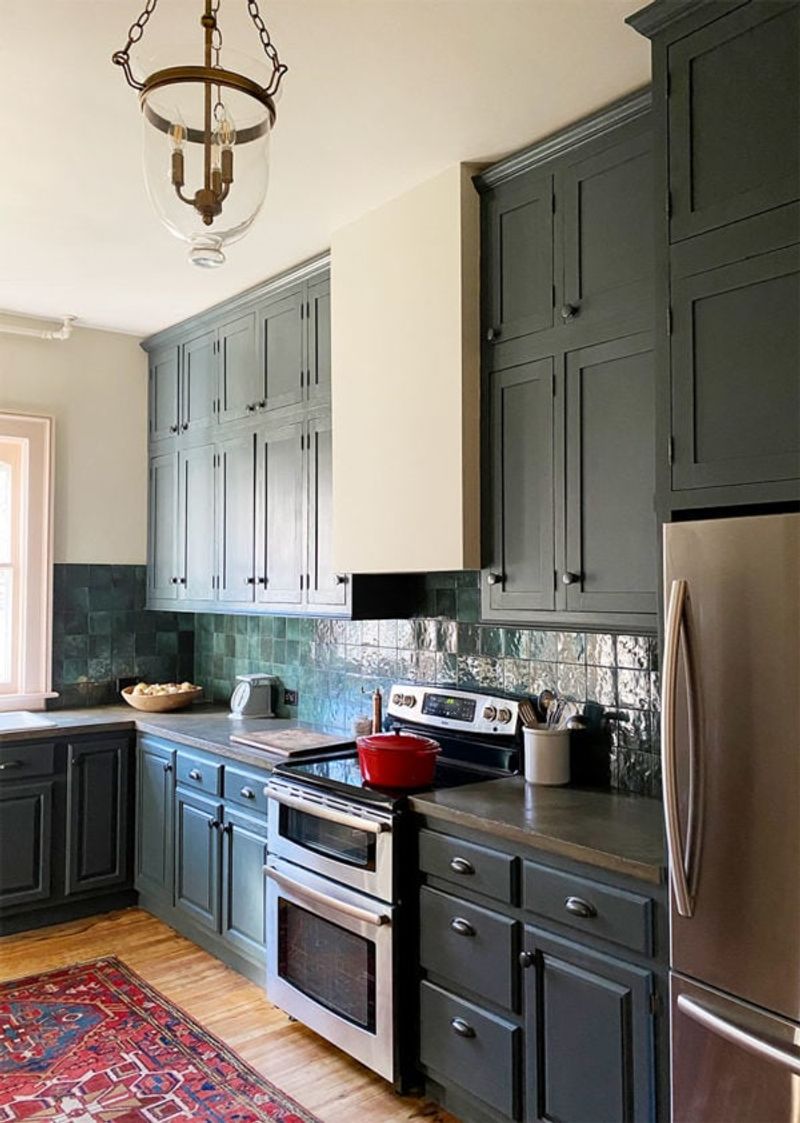
Flat slab cabinet doors feel distinctly outdated, but complete replacement isn’t always necessary. Innovative New Yorkers create Shaker-style doors by attaching thin wooden frames to existing flat doors, instantly transforming them into the most enduringly popular cabinet style.
Careful measurement and precise 45-degree miter cuts are essential for professional results. Most Park Slope renovators use 1/4-inch thick by 2-inch wide hardwood strips, secured with wood glue and brad nails for a permanent bond.
The dimensional interest created by these applied frames adds subtle sophistication that flat doors lack. This technique works equally well on drawers, creating a cohesive look throughout the kitchen while maintaining the sturdy structure of your original cabinetry.
10. Installing Glass Inserts
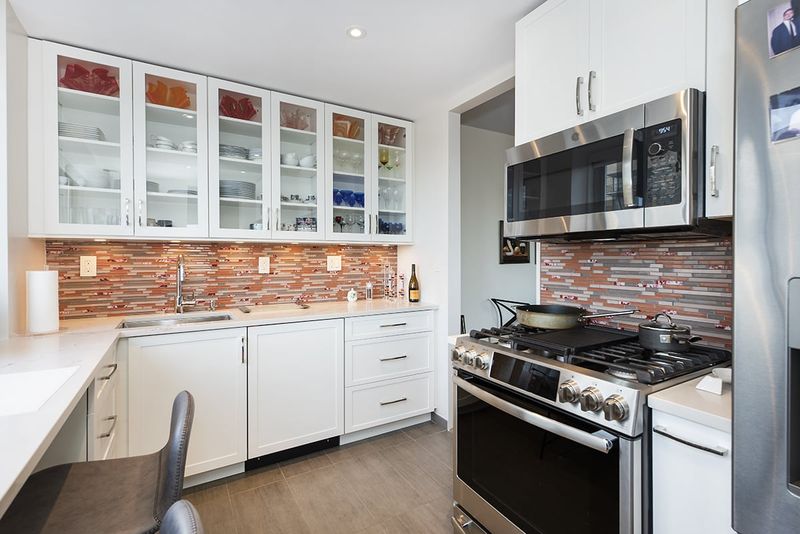
Solid upper cabinets can make small New York kitchens feel claustrophobic. Forward-thinking renovators remove center door panels and replace them with glass inserts, creating visual breathing room while maintaining enclosed storage.
The process involves carefully routing out the inner panel, creating a precise recess for glass installation. Many Upper West Side residents choose textured or frosted glass that obscures contents while still transmitting light.
This modification works particularly well on cabinets flanking windows or those containing display-worthy items like glassware. The combination of painted frames with glass inserts strikes the perfect balance between open shelving’s airiness and traditional cabinets’ practicality—ideal for city dwellers who appreciate both aesthetics and function.
11. Soft-Close Mechanisms
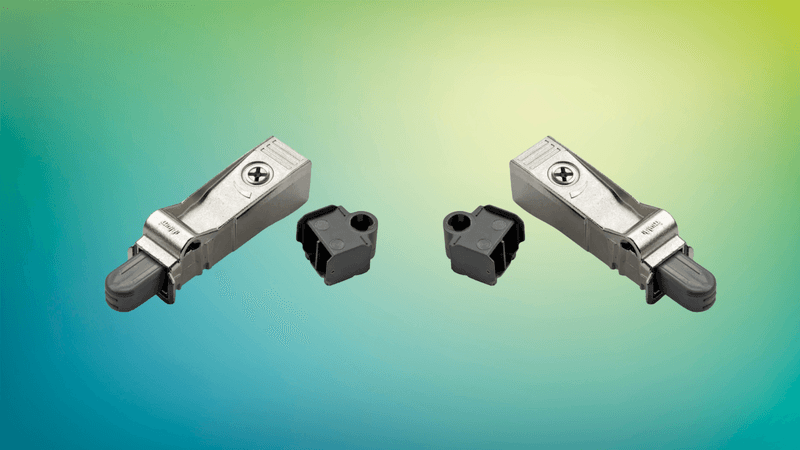
Slamming cabinets announce themselves as outdated through sound alone. Tribeca renovators religiously install soft-close dampers on both drawers and doors, creating the whisper-quiet operation associated with high-end custom cabinetry.
These small hydraulic mechanisms can be retrofitted to existing hinges or installed as separate components. The transformation is particularly dramatic in open-concept apartments where kitchen noise carries throughout the living space.
Beyond the luxury feel, soft-close hardware prevents the gradual loosening of cabinet components caused by repeated impact. While seemingly minor, this upgrade significantly contributes to the overall impression of quality and attention to detail that distinguishes thoughtfully renovated New York kitchens from their hastily refreshed counterparts.
12. Replacing Center Panels with Cane
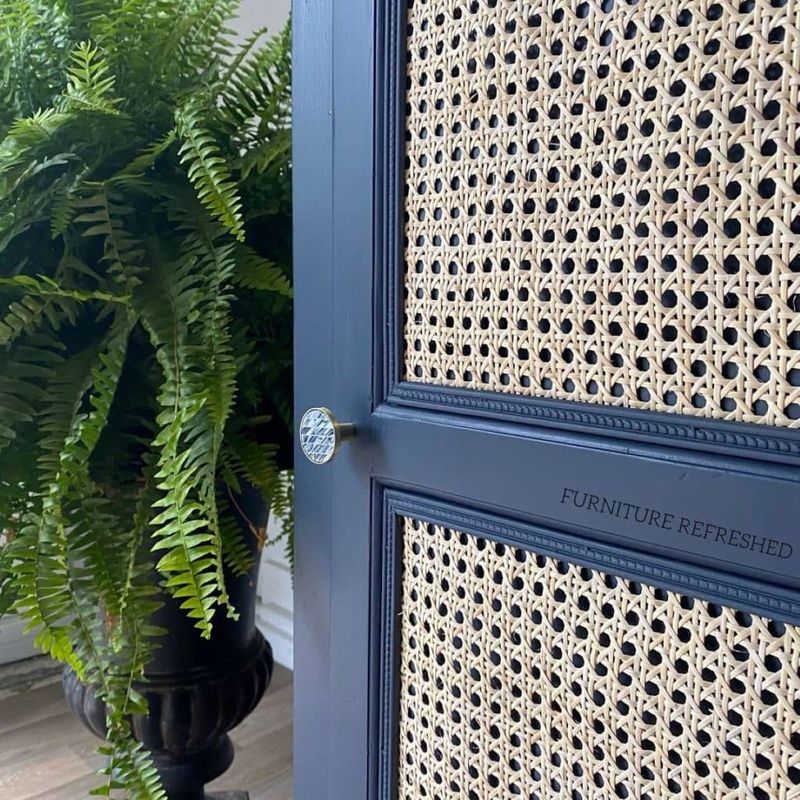
Cane webbing has made a spectacular comeback in New York interiors. Design-forward Brooklynites are removing solid center panels from cabinet doors and installing natural cane webbing for texture and visual interest that paint alone can’t provide.
The installation requires creating a recessed lip to hold the cane securely in place—typically accomplished by routing the back side of the door frame. Natural cane brings organic warmth that beautifully balances painted cabinet frames, especially in predominantly white kitchens.
This modification works best on select upper cabinets rather than throughout the kitchen. The semi-transparent nature of cane requires thoughtful consideration of what will be visible through it, making it ideal for cabinets storing attractive dishware or glassware collections.
13. Cutting Out Raised Panels
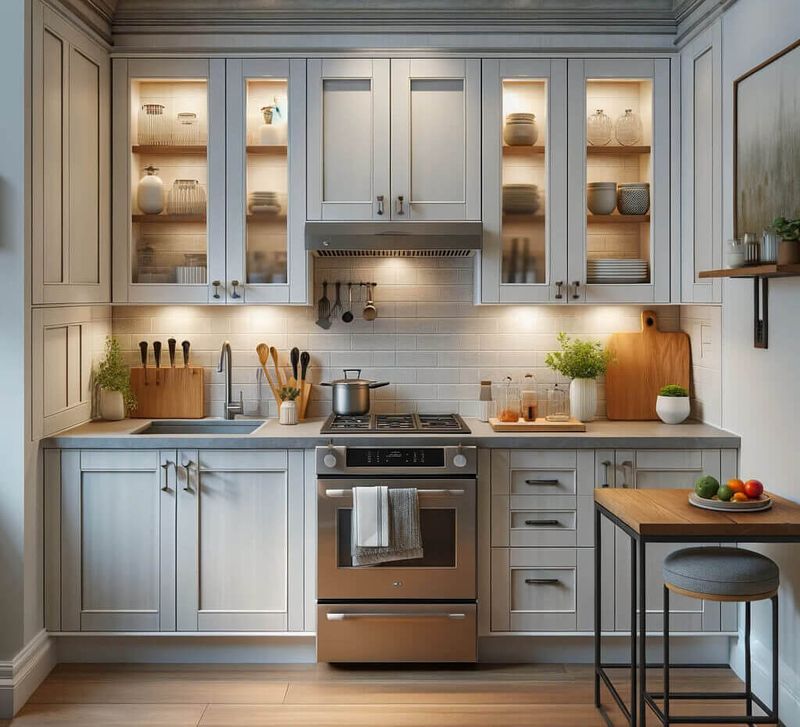
Raised panel cabinet doors feel decidedly traditional, but complete replacement isn’t always necessary. Resourceful New Yorkers carefully cut out these center panels, creating frames that can be filled with more contemporary materials.
A jigsaw with a fine-tooth blade makes precise cuts just inside the raised panel, creating a perfect opening. The resulting frame can be backed with painted beadboard, metal mesh, or even fabric for unique textural contrast.
This approach preserves the solid hardwood frame while completely transforming the door’s appearance. The technique works particularly well for cabinets that might benefit from partial visibility of contents, such as those displaying decorative items or frequently used cooking ingredients in attractive containers.
14. Adding Open Shelving Sections
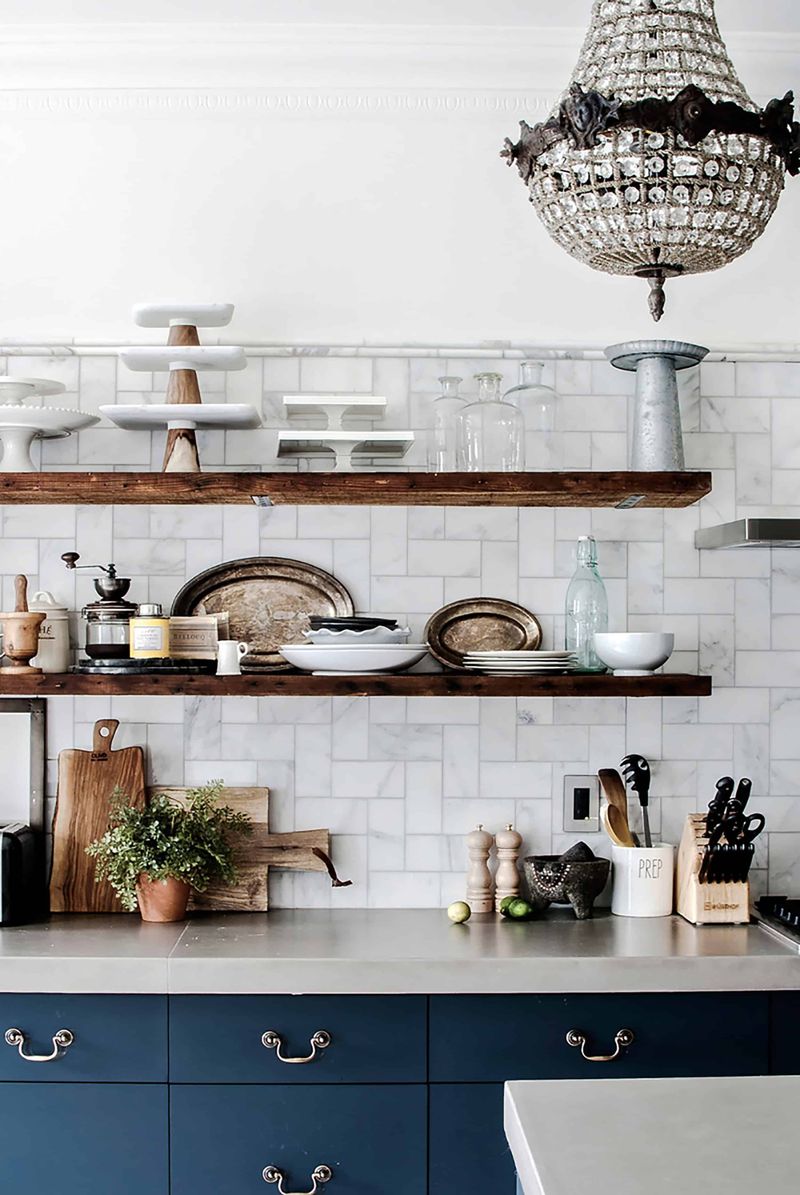
Completely enclosed cabinetry can feel heavy and outdated. Strategic removal of select cabinet doors creates fashionable open shelving sections that break up visual monotony while providing display space for attractive items.
Hell’s Kitchen renovators often remove doors from cabinets flanking the range or sink, creating balanced focal points. The key is carefully filling and sanding hinge holes, then painting the interior to match exterior surfaces for a purposeful built-in look.
This modification works especially well when combined with interior cabinet lighting that highlights displayed objects. The resulting mix of open and closed storage offers the perfect compromise between Instagram-worthy kitchen styling and practical concealment of less attractive necessities.
15. Applying Wood Veneer Overlays
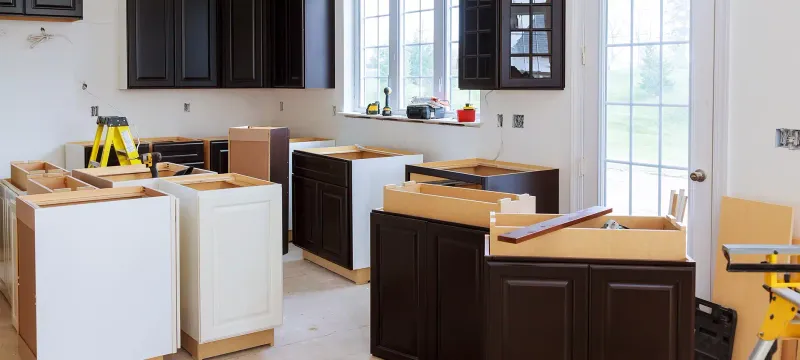
Deeply grooved or damaged cabinet surfaces present special challenges. Professional designers in Gramercy Park often apply thin wood veneer directly over problematic surfaces, creating a perfectly smooth foundation for paint.
Self-adhesive veneer sheets are carefully trimmed to size, then firmly bonded using a J-roller for bubble-free application. This technique effectively covers routing, minor damage, or dated wood grain patterns that might otherwise telegraph through paint.
The resulting surface accepts primer and paint beautifully, with no hint of the original texture beneath. While requiring precision and patience, this approach often proves more economical and less disruptive than complete cabinet replacement a significant consideration in buildings with strict renovation rules.
16. Installing LED Strip Lighting
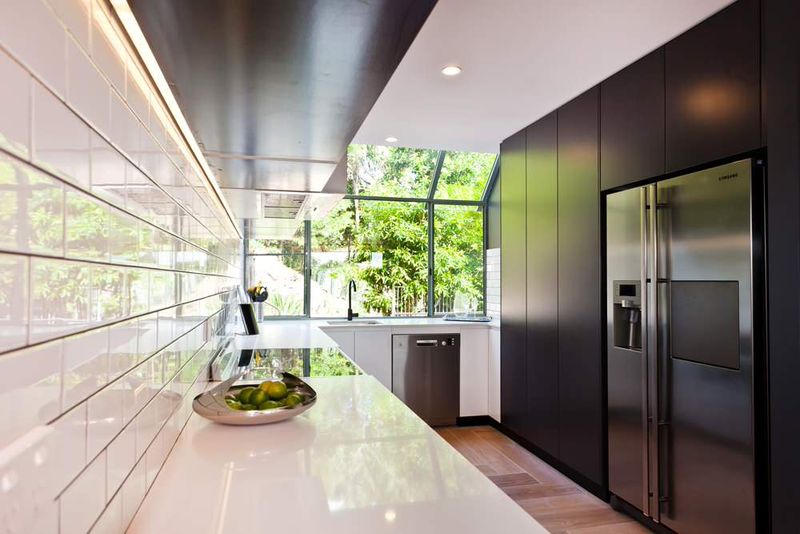
Strategic lighting transforms ordinary cabinets into architectural features. Forward-thinking New Yorkers install slim LED strips beneath upper cabinets, inside glass-fronted cabinets, and along toe kicks before painting.
The key is creating subtle channels to house wiring and connectors, ensuring a clean, professional appearance. Many Financial District renovators opt for smart lighting systems that change color temperature throughout the day, creating different moods for morning coffee versus evening entertaining.
This pre-painting modification requires careful planning but delivers dramatic results for relatively modest investment. The warm glow highlighting cabinetry transforms utilitarian storage into a design statement while providing practical task lighting—a perfect example of the form-meets-function approach that characterizes sophisticated New York interiors.
17. Replacing Upper Cabinets with Shelves
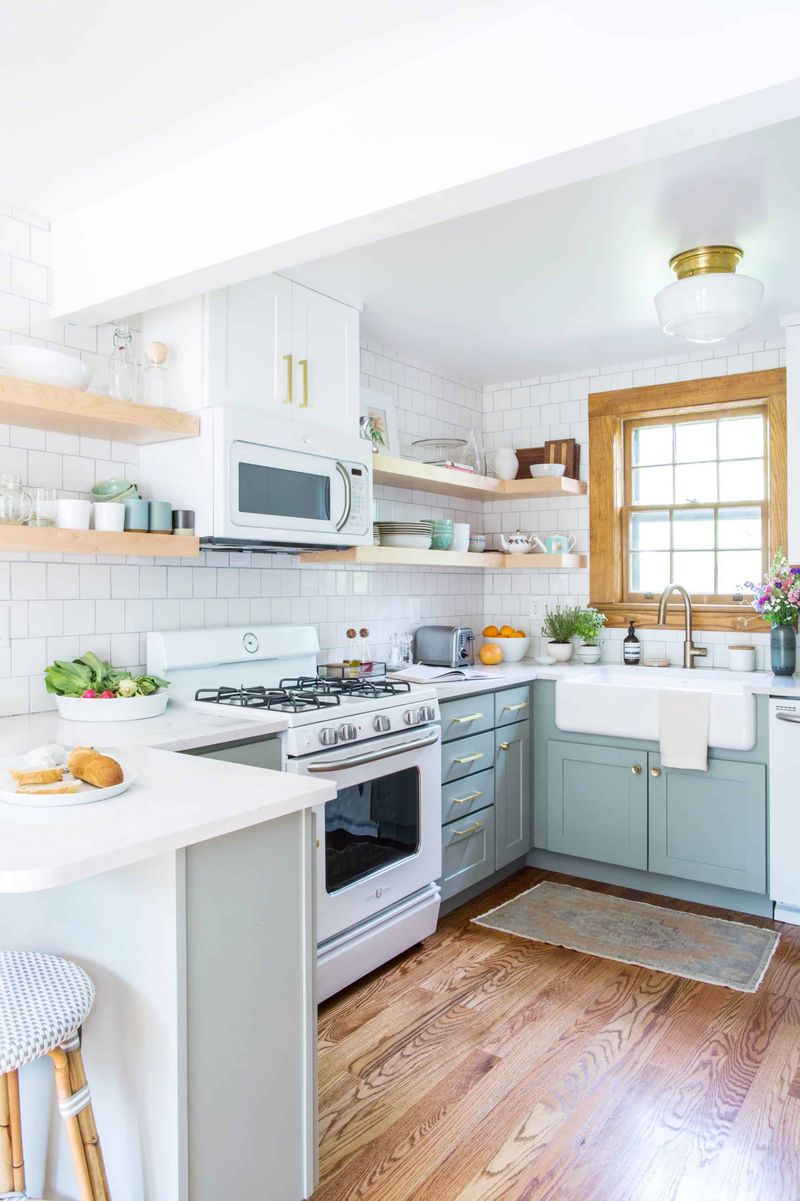
Removing entire upper cabinets might seem counterintuitive in storage-starved New York apartments, but strategic replacement with floating shelves can dramatically open up visual space. This approach works particularly well on cabinets flanking windows or range hoods.
The transformation requires removing cabinets, patching walls, then installing substantial floating shelves that appear to be solid wood but often conceal clever steel support systems. East Village residents especially embrace this modification, pairing it with maximized lower cabinet storage through drawer organizers and vertical dividers.
The resulting airy feel makes compact kitchens appear significantly larger while providing display space for beautiful objects. This modification requires confidence in editing possessions—a quintessentially New York skill that values quality over quantity.
18. Adding Modern Toe Kicks
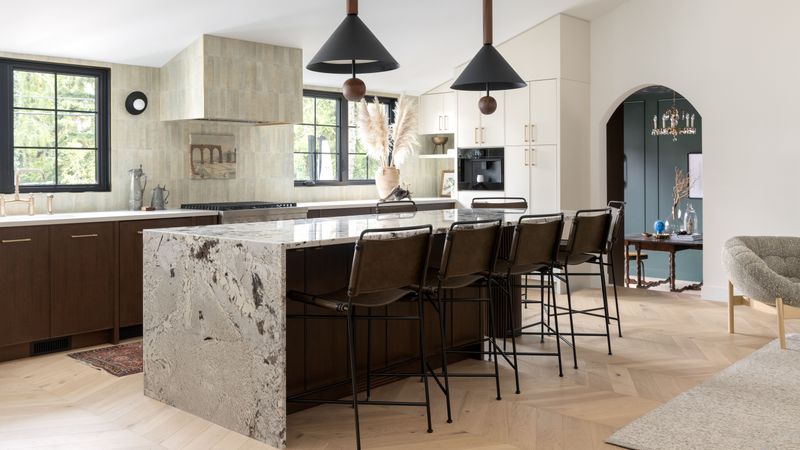
Standard cabinet toe kicks rarely receive design attention, but this overlooked area offers significant modernization potential. Innovative New Yorkers replace the recessed toe kick with a flush design, often in contrasting materials like brushed metal or black laminate.
The modification creates a sleek, intentional appearance that signals thoughtful design rather than builder-grade acceptance. Some West Village renovators incorporate touch-latch mechanisms into these new toe kicks, creating hidden storage drawers for rarely used items.
LED lighting strips installed along this area cast a subtle glow across flooring, creating the illusion that cabinets are floating. This seemingly minor detail significantly contributes to the overall contemporary feel of the kitchen while providing practical benefits like improved cleanability.
19. Integrating Hidden Charging Stations
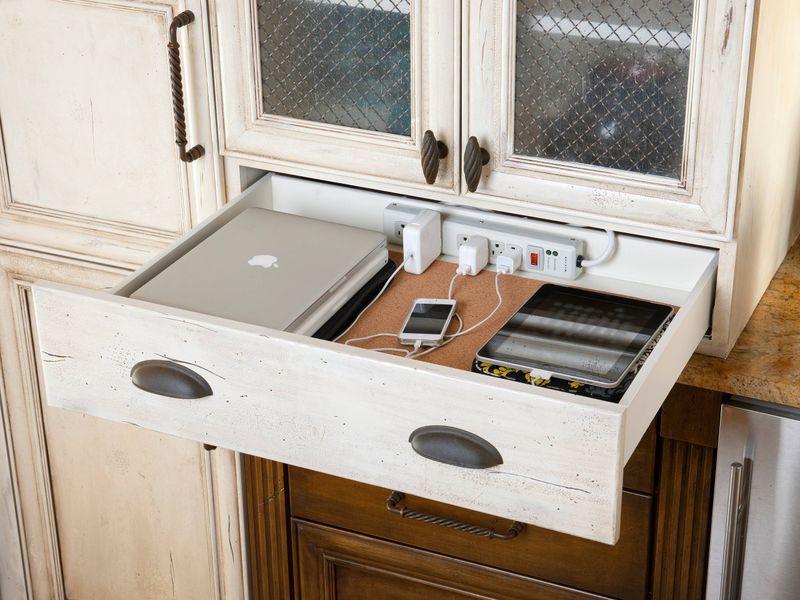
Cluttered countertops filled with charging cables undermine even the most beautiful cabinet renovations. Tech-savvy New Yorkers create hidden charging stations inside cabinets before painting, accommodating the reality of modern device dependency without visual chaos.
The modification involves cutting small access holes for cables and installing interior outlets or USB ports. Some Long Island City renovators dedicate an entire drawer to this purpose, with custom dividers keeping devices organized while charging.
This practical enhancement addresses a thoroughly modern need while maintaining clean aesthetics. The key is planning cable management thoroughly before painting, ensuring any necessary holes or access points are properly finished and sealed to blend seamlessly with the overall cabinet design.
20. Squaring Off Arched Doors
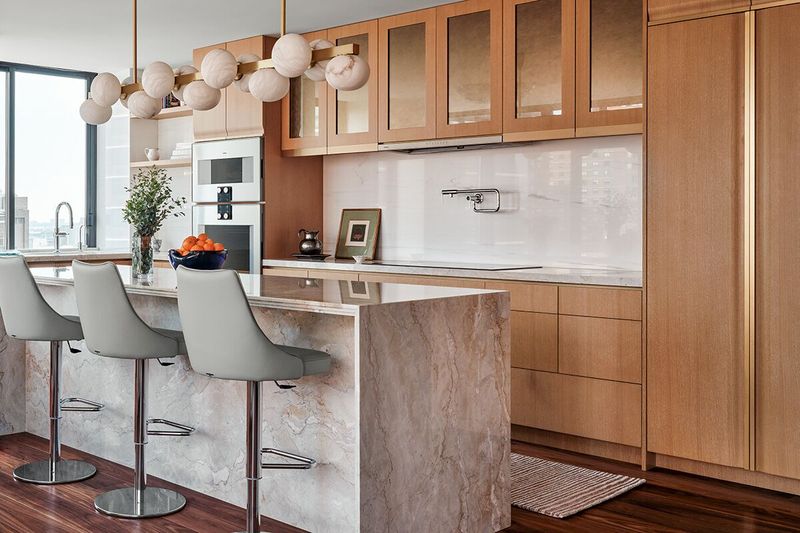
Arched cabinet doors instantly identify kitchens from specific decades. Design-conscious New Yorkers transform these dated curves into clean-lined rectangles before painting, creating a timeless look that won’t quickly become passé again.
The process involves carefully cutting away the arched portion, then attaching a straight piece of matching wood across the top. Meticulous wood filling and sanding create a seamless transition that’s undetectable once painted.
This geometric simplification dramatically modernizes the overall kitchen appearance without requiring complete door replacement. While labor-intensive, the transformation aligns perfectly with contemporary New York design sensibilities that favor architectural simplicity and clean lines over decorative flourishes.
21. Filling Decorative Grooves
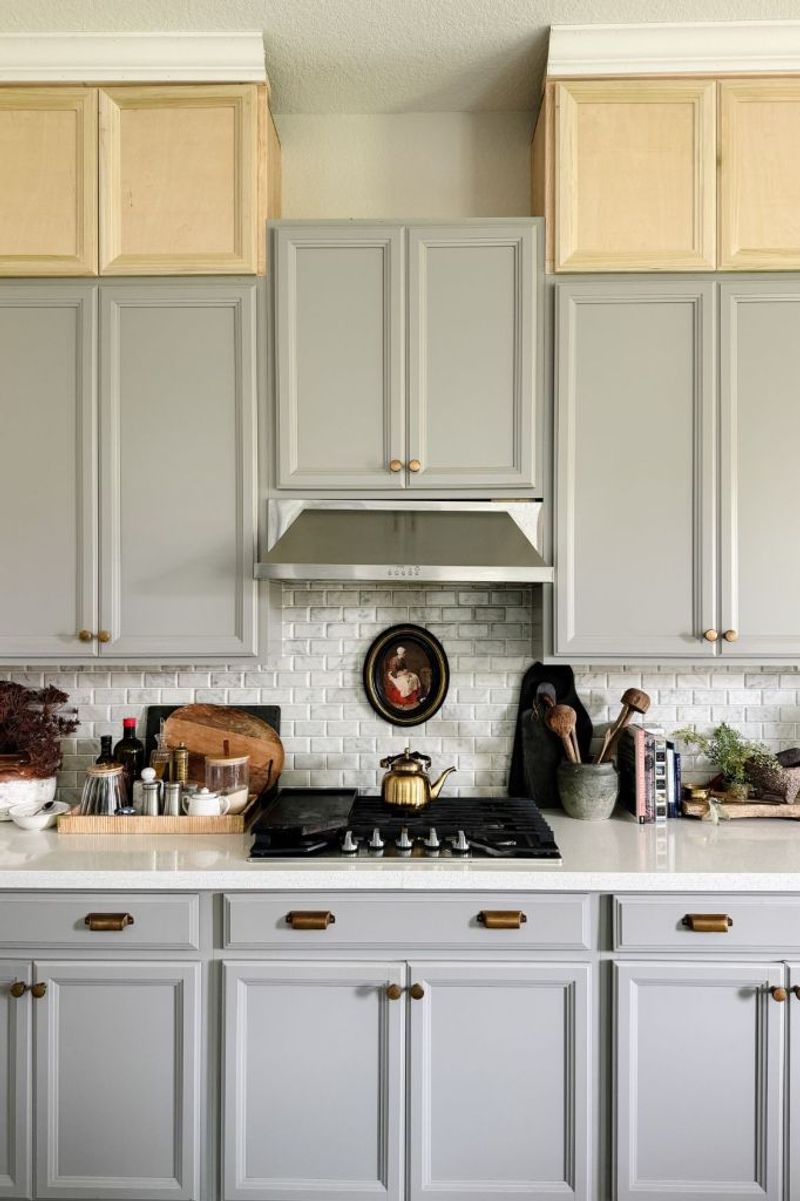
Routed details and decorative grooves that once seemed elegant now appear fussy and dated. Practical New Yorkers fill these grooves with wood putty or automotive body filler before painting, creating clean, contemporary surfaces.
The technique requires multiple thin applications rather than one thick layer, preventing shrinkage and cracking over time. Murray Hill renovators particularly favor this approach for its dramatic before-and-after impact with relatively modest effort.
Once properly filled and sanded, these smooth surfaces accept paint beautifully, with no hint of the decorative elements beneath. This modification works especially well when transitioning from traditional to modern aesthetic, allowing original solid wood cabinets to take on an entirely new personality.
22. Installing Minimalist Handles
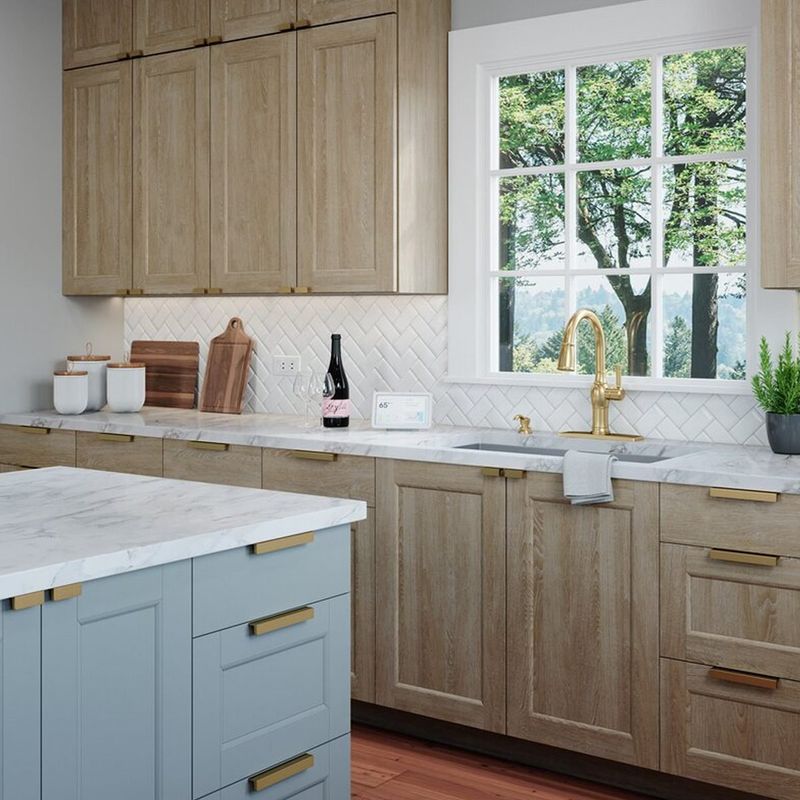
Traditional knobs create visual busyness that contradicts contemporary design principles. Style-conscious New Yorkers replace them with edge pulls that mount to the top or side of cabinet doors, creating a sleek, hardware-minimal appearance.
These understated pulls require precise installation but deliver dramatic modernizing effects. Some NoHo designers eliminate visible hardware entirely, opting for push-latch mechanisms that allow doors to open with a gentle press.
The clean lines created by minimalist hardware choices complement painted finishes beautifully, allowing cabinet color and texture to become the focal point rather than decorative elements. This subtle yet impactful change exemplifies the restrained sophistication that characterizes the most admired New York interiors.

